Online Edition:
March 2012
Vol. XVIII, No. 1
The Altar as the Center of the Church
Principles of Design
by Duncan Stroik
A church is the place where the Christian community is gathered to hear the word of God, to offer prayers of intercession and praise to God, and above all to celebrate the holy mysteries; and it is the place where the holy sacrament of the eucharist is kept. Thus it stands as a special kind of image of the Church itself, which is God’s temple built from living stones.
– Rites for the Dedication of a Church1
Now that we’ve entered the third millennium, it is appropriate to look back on the architecture of the past millennium, including the architecture of this past century. Considering how previous generations have honored Christ’s birth through material construction, we must ask for this generation: “How shall we then build?”
Focusing on the Catholic architecture constructed since the Second World War, we are struck by the great change that has taken place in our portrayal of the sacred. I am speaking of the abstract and unrecognizable forms, minimalist spaces, unnatural materials, and the lack of figurative sacred art that describe the majority of our churches built since 1945.
For some, Modernist architecture is seen as the embodiment of the Spirit of Vatican II, symbolizing the necessary renewal of the Church and her liturgy. To others, these churches are seen as anti-traditional, symbolizing all that was wrong with the Vatican Council. Neither view seems to sufficiently consider the facts. To the student of architectural history, the architecture built by the Catholic Church during the past fifty years does not seem to be all that different from secular trends. In fact, rather than being the architecture called for by the fathers of Vatican II, the embrace of Modernism by the Church was simply an adoption of contemporary architectural expression. [Figure 1 below]
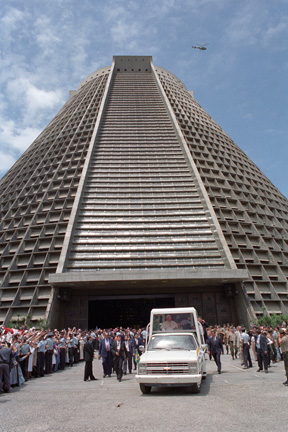
Fig 1. Cathedral of Rio de Janeiro, Brazil, Pope John Paul II visit, October 1997.
Photo: L’Osservatore Romano
“C’è poco senso del sacro nelle nuove chiese”. “There is little sense of the sacred in the new churches”. Many Catholics have thought or said this in recent decades, but it took the Holy Father, John Paul II, to bring the issue to the fore after his visit to a church in the periphery of Rome in 1999. This comment from John Paul II caused a bit of a stir in the Italian media, and Cardinal Ruini reiterated the pope’s concerns in his own addresses to architects and artists.2 I would suggest that some of the reasons for the lack of the sacred in our modern churches are the absence of unity, harmony, beauty, tradition, symbols, and recognizable imagery. Something has been lost that needs to be regained.
But in regaining aspects of liturgical architecture it is too easy to merely produce a banal traditionalism that is not much better than the strident iconoclasm of Modernism. Is there a conceptual framework that will allow us to make educated judgments about the design and renovation of the domus Dei? One way is by considering the nature of the holy liturgy and the centrality of the altar in the celebration. In order to design a beautiful church we should begin with a beautiful altar.
Sign of Christ and Focus of the Liturgy
Often when I describe a church building, I begin with the exterior and proceed into the nave toward the sanctuary, because this is the way that we experience a church. But another way of thinking about the church, theologically as well as architecturally, is to begin with the church’s raison d’être, the holy altar, and allow the building to grow out from there. It is my contention that if we design a material altar that adequately portrays its meaning in our faith, and then allow the rest of the church to harmonize with the altar, we may be able to return the sense of the sacred (which Pope John Paul II noted the absence of) to our modern churches. [Figure 2 below]
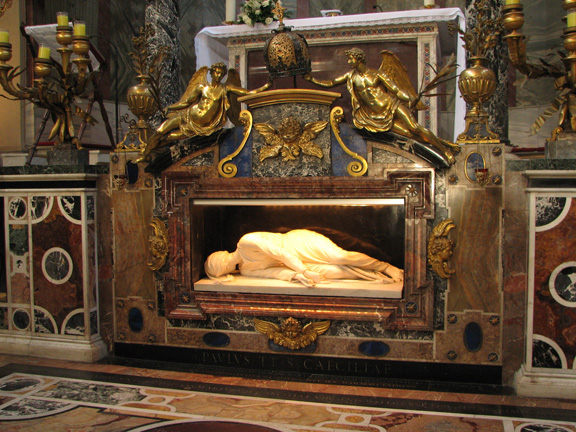
Fig 2. Altar and Shrine of Saint Cecilia, Rome. Photo: Father Lawrence, OP
Symbolically, we should build the altar first and work out from there. I would suggest that we are less likely to put up with low-quality materials, horizontal proportions, abstract figures, and vacuous sanctuaries if we come to grips with the profound meaning of the altar and allow it to influence our design of the church. One can, in a sense, design the church from inside out. However, I do not mean that in a church “form follows function”; a church is more than a building designed to efficiently celebrate the Mass. It has only been in the twentieth century that people have believed that churches are successful only if they meet functional criteria in the same way as in a manufacturing plant.
There is no place set apart for celebrating the liturgy unless it has an altar. From earliest times the altar has been the hierarchical center of the church, the focus of the liturgy and a representation of Christ. In the earliest examples of churches, such as at Dura-Europos in Asia Minor, we find a room with an altartable. The Rites for the Dedication of a Church put it this way: “the altar of a church … stands as a sign of Christ Himself, who is the priest, the victim, and the altar of His own sacrifice”.3
The altar can also be seen to symbolize the table of the Last Supper, the altar of the Temple in Jerusalem, the cross of Calvary, the tomb of Christ’s burial and resurrection, and the altar in heaven.4 The design and construction of the altar should embody meal and sacrifice as well as birth and resurrection. One could combine a block-like altar with a table of columns, or combine a tomb with a crib. And the design of the whole church, if we are being consistent, will aid in this understanding of the altar through its planning and iconography. [Figure 3 below]

Fig 3. Disputa del Sacramento, Raphael (1509-10). Apostolic Palace, Vatican City. Photo: Erzalibillas
The British author Paul Johnson would have it that American Catholics are simply Calvinists who go to Mass. In a time when there is great misunderstanding of the meaning of the Mass and belief in the Real Presence of Christ in the Eucharist, it is important that we re-emphasize the Church’s teaching through the medium of beautiful liturgy and a sacramental architecture. It is important also that we re-appropriate the meaning of the altar and how it is represented.
During the Counter-Reformation, the Protestant denial of the Real Presence of the Eucharist led the Catholic Church to respond by creating large and beautiful tabernacles, joining them with the altar, and employing biblical and Christian imagery supporting the doctrine within spacious churches. One thinks particularly of Raphael’s paintings of the Disputa del Sacramento and the Miracle at Bolsena in the Vatican, or Leonardo da Vinci’s Last Supper in Milan. The Miracle of St. Gregory the Great by Sacchi over the altar of St. Gregory in St. Peter’s Basilica is another excellent example. We must create the equivalent art and architecture for our time, when the average Catholic often doubts the efficacy of the sacraments.
Designing a Holy and Beautiful Altar
The pope has spoken of treating holy objects with holy respect.5 The most holy object in a church, the altar, which is also the focus of the Mass, deserves the greatest attention to design and the greatest relative expenditure. It should be constructed with the finest materials possible and have a most elegant and beautiful design. The altar also needs to be the most permanent part of the church, with its own foundations, and receive its own separate consecration.
The altar is the table on which the priest commemorates and joins us to Christ’s sacrifice. It is a most holy place on which mere bread and wine are placed, that become Christ’s body and blood. An altar on which the unbloody sacrifice of the Mass is presented is a most holy object. That is why we have rules about how to honor, preserve, and take care of the altar. If it were any other table, that is, merely a piece of furnishing, we would not have any concerns about treating it with disrespect. We give respect to other material objects (such as national flags), which are mere symbols. How much greater should our care for the altar of sacrifice be?
There are infinite ways to design a holy and beautiful altar, always seeking to portray its liturgical meaning. [Figure 4 below]

Fig 4. The High Altar at Saint John Lateran Basilica, Rome. photo: Thomas Stroka
The use of fine bronze or cast iron, beautifully carved wood, or various stones may all be appropriate. In all cases the Church has a longstanding preference for stone, especially for the mensa or top. Pope Saint Sylvester (314-335), who was the patron of Saint John Lateran, is said to be the first to have made stone altars obligatory. Saint John Chrysostom writes that “this altar is an object of wonder: by nature it is stone, but it is made holy when it receives the body of Christ”.6 It is this mensa that is anointed at the time of dedication, much like Christ’s body was anointed with oil both before and after His death. Because it is a holy object, we also incense the altar. Just as the altar represents Christ, the stone material represents “Christ the rock” and “the stone that the builders rejected which has become the cornerstone” (Ps 118:22).
The question for us is, how can the design of the altar (and by extension, the area around it) indicate its sacredness and the honor it deserves? People are quite intelligent about these things, and an altar that is a simple wooden table or an abstract metal structure will not be approached with the awe and reverence it actually deserves. An abstract or minimalist object may be fine to read a book on, or eat sandwiches off of, but it can never fully hold our attention. [Figure 5 below]
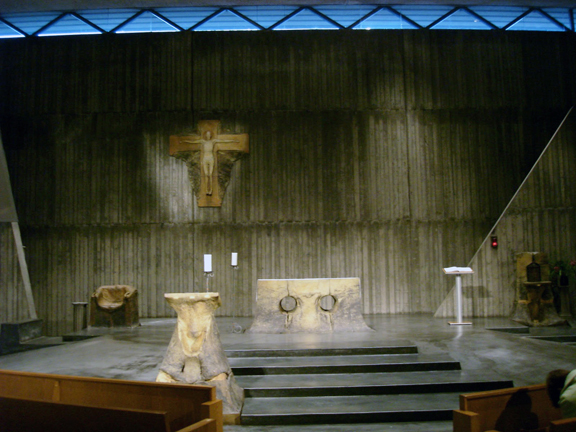
Fig 5. Holy Spirit Parish, Berkeley, California. photo: Michael Salgarolo
Instead, the design of the altar should be such that it portrays the theological truths we wish to express. And if we have a beautiful altar, then should we not make the sanctuary and the church beautiful as well?
The mensa, or top stone, receives relics of the saints, following the early tradition of celebrating Mass over the tombs of the martyrs. As the Eucharist is a joining of the Church in Christ’s sacrifice, it can be expressed in the body of a holy man or woman who exhibited that sacrifice in their life. That is, the body or relic of the saint is a material reminder of Christ’s one immemorial sacrifice and bodily death. Saint Ambrose explains that in this way “the triumphant victims may occupy the place where Christ is victim: He, however, who suffered for all, upon the altar; they who have been redeemed by His sufferings, beneath the altar”.7 This is why altars have been dedicated or named after saints, the relics of whom are often placed therein. For instance, in Saint Peter’s Basilica each altar has a dedication to the saint or saints buried underneath. It is imperative for us to recover this cult of the saints and martyrs, especially after the twentieth century, which saw the greatest persecution against Christians since Roman times.
It may be appropriate to employ symbols or iconography on the most important object in the church. The articulation may be simply decorative in a composition, using color, mosaics, and other fine inlaid materials, or it may seek to express the paschal mystery through images of the Last Supper, the Cross, the Resurrection, or even to connect the paschal mystery to other truths such as the communion of saints. The altar as an expression of the cross is often iterated by a decorative bas-relief or engraving on the frontal.
Many of the altars built recently do not harmonize with the meaning of the liturgy, nor do they live up to the standard set by the past. Some of the features that do not adequately symbolize the altar are an open table for a freestanding altar, crude or cheap materials, an impermanent aesthetic, or a disfigured element.
The size and scale of the altar must be generous enough to be seen by all of the faithful and read as prominent within the church. It should clearly be the most important element in the church and therefore designed and constructed out of the finest materials, such as marble. This will entail a generous allotment of funds — it is not unreasonable to think about the cost of a large marble altar as the equivalent of buying a large SUV or a Lexus automobile.
The Freestanding Altar and the Ciborium
In general the recommendation for new altars to be freestanding, so that the priest may walk around it and may offer Mass versus populum, has not been well answered by modern architects and artisans. Instead of making the altar more prominent we have instead diminished its importance architecturally. A freestanding cantilever or a block of stone approximately three feet tall and five feet wide standing within a sanctuary thirty to forty feet wide gets lost.8 For this reason the freestanding altar should include steps to elevate it in importance, which allows the priest to step up to the altar making him more visible and allows acolytes and others to walk around it. Along with steps, the altar should be surrounded by other elements, which act like picture frames, pedestals, or the architectural equivalent of supporting actors in a play. [Figure 6 below]
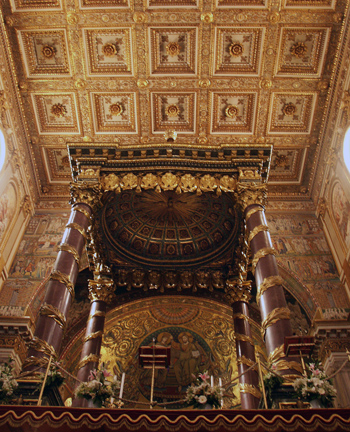
Fig 6. Baldacchino with the Dove of the Holy Spirit. Santa Maria Maggiore Basilica, Rome. Photo: Duncan Stroik
In all of the early Christian basilicas, starting with St. John Lateran in Rome, the altar was set within a baldacchino or ciborium, normally four columns and beams that define an aedicule, a small shrine or holy place. The baldacchino becomes an extension horizontally and vertically into the space of the church, helping to enlarge the presence of the altar visually as well as delimiting an altar precinct. This is particularly advantageous for a stone altar within a large spacious sanctuary. A smaller church or chapel can do without the baldacchino, although theologically it can be beneficial.
Usually Corinthian columns hold a type of canopy symbolizing the tabernacle tent in the wilderness that sheltered the Ark of the Covenant. It is interesting that the term for baldacchino in Europe is the “ciborium”, which is the same name given to the holy vessel in which the consecrated hosts are placed and reserved within the tabernacle.
One way to understand the baldacchino is as the architectural embodiment of the epiclesis of the Mass.9 Thus we have the altar, which is Christ, with a baldacchino, which symbolizes the Holy Spirit and the Father in heaven. This is often articulated by images of the Holy Spirit on the ceiling of the baldacchino. The hanging or cantilevered tester,10 usually a canopy without columns, also marks the altar precinct within the sanctuary and is an image of the Tent in the Wilderness and the veil in the holy of Holies in the Temple.11 The tester, or baldacchino, create a shrine within the church, becoming an extension of the altar and the tabernacle, which in a sense the whole church should be.
The Sanctuary Enframes the Altar
The area surrounding the altar should help to frame it, to create a threshold, and to set it off while at the same time growing out of it architecturally. One might call this the centripetal force of the altar: [Figure 7 below end of paragraph] it draws us to itself and at the same time it imparts sacredness to the areas surrounding it, eventually to the whole church. If we have designed a noble and costly altar it should not be placed in a room that is barren and crude, which would take away from the sacrament and dishonor it. Rather, the altar should have a setting of fine materials and beauty in order to give it due honor.
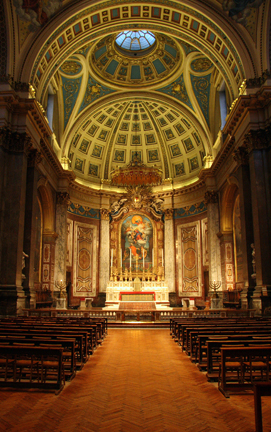
Fig 7. Brompton Oratory, London, photo: Paul Bevan
This area, which includes the floor, the walls, and the ceiling, is known as the sanctuary — the “holy place”. The sanctuary can be thought of as the equivalent to the Holy of Holies in the temple of Solomon. Perhaps the greatest loss of the sense of the sacred in our churches in recent decades has been the disregard or demotion of the sanctuary within the house of God.
The sanctuary is a place set apart from the body of the church. The General Instruction of the Roman Missal (GIRM) states that “The sanctuary should be distinguished from the rest of the church by some feature such as a raised floor, special shape or decoration”.12 The sanctuary is the beautiful jewelry box that holds at its center a precious diamond, the altar of Christ. It displays the altar and at the same time shelters and protects it. This holy place should be generous in size, to allow ample space for the presider, concelebrants, and acolytes. It should also be constructed out of the finest possible materials so as to reflect its significance and the importance of the altartable that resides within. The Eastern churches consider the whole sanctuary to be the altar and therefore only ministers are allowed within it. This concept of the sanctuary’s sacredness, which is so clearly demonstrated by the iconostasis, has also been expressed by churches in the West (though by more subtle means during the past four centuries).
The floor of the sanctuary should be designed with a pattern and material that aid the focus on the altar, often by the use of a contrasting color or banding. The use of marble helps to extend the presence of the altar and ground it in a holy and permanent realm. In this way the altar affects the space of the church in much the same way as a boat in a lake creates waves that ripple out until they reach the shore. Other materials are also acceptable, so long as they are durable, natural, and beautiful. The floor could have a shape defining it within the church by directionality and clear edges, a front and a back threshold, often by the use of low walls or railings. As the most “hierarchical” area within the church, the place of hier–arch or sacred order, the sanctuary should be raised to emphasize its hierarchical importance. Ascending steps almost naturally implies that there is something of great importance at the top. A raised sanctuary also has the benefit of allowing the faithful to better see the action of the sanctuary from the nave.
Because of the lessening of the distinctiveness of the sanctuary, we are brought to almost humorous situations in which signs to “keep out” are placed where once people understood not to enter. In a brochure on the new chapel designed by Philip Johnson at the University of St. Thomas, visitors are told “Do not enter the raised sanctuary (altar area)” — probably because people would not otherwise know from the architectural design. One of the reasons the sense of enclosure is not adequately expressed in many of our new churches has been because of the antagonism toward the altar rail. Even though there is no mandate to remove them or to proscribe their use in new churches, they seem to be one of the traditional elements most hated by liturgical consultants and many designers.
The walls of the sanctuary can surround the altar and enframe it, often articulated with panels, pilasters, or columns to give scale. These elements become the backdrop for the altar, like a landscape within a Renaissance portrait, which always adds to the meaning of the portrayed. The placement and composition of the walls should allow for iconographical elements as well as areas for chair, tabernacle, and other elements. [Figure 8 below]
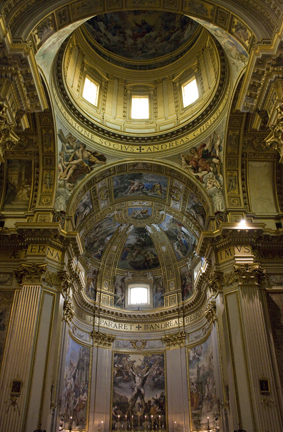
Fig 8. Sant’ Andrea della Valle, Rome, photo: Father Lawrence, OP
The semi-circular apse (or the octagon or square) creates an ending for the building and receives the gaze of the worshippers. Elaborating on the idea of the baldacchino, the sanctuary is also an aedicule or tempietto, reaffirming the primacy of the altar by implying a partially centralized shape. The design of the apse or rear wall is especially crucial as a focus of the sanctuary and often will display Christological or Trinitarian imagery surrounded by saints or the Heavenly Hosts. Being the backdrop for the altar, the apse is an important focus of the church and is therefore also an appropriate place to represent the sacrifice of the Mass through a cross or a crucifix. It is also an appropriate place for an altarpiece that might include an image of the titular saint of the church. The use of gold and other colors to give emphasis to the sanctuary aids in reminding us of the heavenly banquet, which the sanctuary prefigures.
Historically, all cultures have honored important objects and rites within tall vertical spaces. One thinks of congress halls, throne rooms, library reading rooms, banqueting halls, and temples. Just as the priest prays that the angel will take our sacrifice to God’s altar in heaven, the sanctuary should imply this vertical access to heaven, of which we partake in the Mass. The ceiling above the sanctuary can be especially helpful in focusing on the altar by the use of a dome or vault representing the heavens. A flat or coffered ceiling may also be employed, drawing on the geometry of the walls and floor and possibly having a central element above the altar.
The Altar and Tabernacle Are Interrelated
The tabernacle is rightly seen as an extension of the Sacrifice of the Mass; a house for reservation of Christ’s body offered on the altar. The conciliar documents see the tabernacle as crucial to the definition of the church: a “house of prayer in which the Eucharist is celebrated and reserved”.13 As symbol and presence of the Lord, it seems natural that the altar and the tabernacle should be readily identifiable upon entering the church building. Pius XII wrote, “It is one and the same Lord who is immolated on the altar and honored in the tabernacle, and who pours out his blessings from the tabernacle”.14 The tabernacle should be designed and constructed in a manner commensurate with its high status and inherent dignity and located in a position that engenders the respect of the faithful.15 [Figure 9 below]
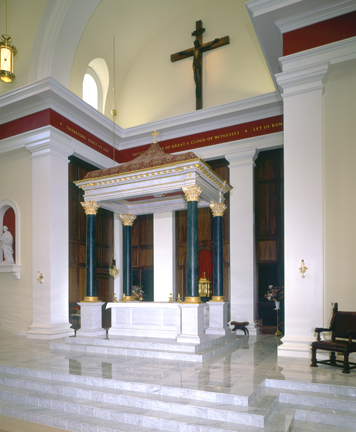
Fig 9. All Saints Church, Walton, Kentucky. Duncan Stroik, architect. Photo: Miles Wolf
The altar, which represents Christ who is the perfect altar of sacrifice, and the tabernacle, which houses Christ’s Real Presence, are rightly placed in the sanctuary and seen as interrelated. Spiritually, the design of the church building begins with the altar, then moves to the tabernacle, and then flows from them. This can be thought of as analogous to the Holy Spirit, who proceeds from the Father and the Son. The tabernacle and the altar are both appropriate foci of the church building, and thus their location is most appropriately on the central axis of the church, allowing their interdependence to be made evident.
According to canon law, the house for the reservation of the Blessed Sacrament “should be placed in a part of the church that is prominent, conspicuous, beautifully decorated, and suitable for prayer”.16 Again, the natural location for the most important elements in a building will be on the central axis. This is why in the synagogue, the bema [platform where services are conducted] faces the Ark, which holds the scriptures. Many Protestants churches place the pulpit at the center to express their faith in Sola Scriptura (Bible alone), while some denominations will place a baptismal pool in the apse. Should not we who esteem the Eucharist treat the placement of the tabernacle in a like manner? If placed on the central axis, the tabernacle will be in the most prominent location visible to the assembly during the liturgy and outside of it. The tabernacle will be given similar prominence as the altar because it is the location of the abiding presence of Christ, who said, “I will be with you always” (Matt. 28:20). [Figure 10 below]
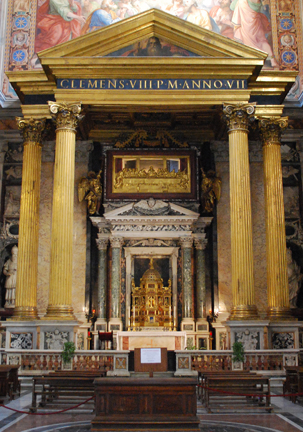
Fig 10. Blessed Sacrament Altar at Saint John Lateran Basilica, Rome photo: Thomas Stroka
There are many solutions to reserving the Blessed Sacrament in a prominent way: as a hanging pyx, wall safe, Ark of the Covenant, sacrament tower, or as a miniature church or tempietto. The tabernacle can be placed on the central axis at the back of the apse or in a chapel, on a shrine or pedestal, on an old high altar, and should be raised to a height so that it is generally visible in the church.17 As part of a high altar, the design and placement of the tabernacle shall be prominent, and should offer a connection with the altar of sacrifice and the altar in heaven. Canon law requires that “a special lamp burn continuously” before the tabernacle, signifying Christ’s presence.18
In America, tabernacles have traditionally been constructed out of some type of bronze, especially the doors. However, in many Renaissance churches the tabernacle will be a small marble doorway placed on the wall, while in many Baroque churches there is a tradition of integrating it as one part of the marble altar. One can find examples in Europe of beautiful tabernacles made out of natural or painted wood, gold and silver, sometimes with inlaid precious jewels. In general, a tabernacle should be in keeping with the design of the altar, but this does not prevent it from being more ornate than other elements in the church. As one of the smallest liturgical elements in the church it can be argued that the tabernacle deserves particular emphasis, articulation, and fine materials. The architecture and art surrounding the tabernacle should help make it a focus of the church’s horizontal axis.
Both the laity and the liturgical establishment agree that a crucial issue today in the design of Catholic churches in America is this: what should the relation between the altar and the tabernacle be? We have begun our design of the church with its focus, the altar, and is not the tabernacle rightly seen as the extension of the altar?19 The house of the Blessed Sacrament only exists because of the altar of sacrifice. Of the seven sacraments received in the church, the sacrament of communion is most closely associated with the two elements of altar and tabernacle. Therefore, it would follow that the tabernacle keep a certain reference to the altar, so that its design and location can express its theological and sacramental link with the Eucharistic celebration.
A separate place of reservation of the Blessed Sacrament is allowed as traditional in cathedrals, shrines, and many ancient churches in Rome. Those favoring such a solution as a model for parish churches emphasize the need for a place to foster devotion to the Blessed Sacrament.20 It is necessary, however, to remind ourselves how beautiful and spacious the Eucharistic chapels in Rome are: some of them are more transcendent and have greater amounts of iconography than the finest cathedrals in America. Furthermore, when considering a separate chapel, one must remember that, for many of the faithful, having a Blessed Sacrament chapel may make the nave feel like it is not a place of prayer.21
Continued: Part II – Conclusion
NOTES:
1 Rites for the Dedication of a Church, Prot. no. CD 300/77.
2 Catholic World News, October 29, 1997.
3 Rites for the Dedication of a Church, Prot. no. CD/77. “And the altar of a church, where the holy people of God gathers to take part in the Lord’s sacrifice and to be refreshed by the heavenly meal, stands as a sign of Christ Himself, who is the priest, the victim, and the altar of His own sacrifice.” p. 96.
4 GIRM, Eucharistic Prayer I, “Almighty God, we pray that your angel may take this sacrifice to your altar in heaven.”
5 Bl. Pope John Paul II, Vicesimus Quintus Annos (On the 25th Anniversary of the Constitution on the Sacred Liturgy), (Dec. 4, 1988), II A:7, “Faith in this presence of the Lord involves an outward sign of respect towards the church, the holy place in which God manifests Himself in mystery (cf. Ex. 3:5), especially during the celebration of the sacraments: holy things must always be treated in a holy manner”.
6 Saint John Chrysostom, Homilia XX in II Cor., 3: PG 61, 540. Cf. Rites, Dedication of an Altar, IV.23.
7 Saint Ambrose, Epistula 22, 13:PL 16, 1023; see Ps. Maximus of Turin, Sermo, 78: PL 57, 689-690.
8 In my experience, the dimensions of the altar should be as follows: the height varies between 38 inches and 42 inches (or between .96 m and 1 m). A width of 5 feet is suitable for the altar of a small church (1.5m); a width of 7 ft. to 8ft. 6 in. (2.1 m to 2.6 m) is proper for a mensa of a church of importance and makes it possible for at least three priests to stand in front of it for concelebration. Of course, in large basilicas or cathedrals there are sanctuaries that can accommodate altars up to 10 feet wide (or 3m). For instance, the high altar in St. John Lateran is approximately 10 ft. wide (3 m), while the high altar at Santa Maria Maggiore (Saint Mary Major) is approximately 11 ft. wide (3.4m). The depth of the altar should be in relation to its length probably anywhere between 3 and 5 feet (.9 to 1.5 m). In general, a mensa for an altar attached to a reredos or containing a tabernacle should have between 1 ft. 6 in. to 2 ft. clear (.5 to .6 m).
9 “Altare e Ciborio, Iconografia e Iconologia” by Gemma Oberto, Gli Spazi della Celebrazione Rituale, Edizioni O.R., Milan, 1984.
10 Traditionally the Church has required a canopy in all churches wherein the Eucharist is reserved. Although apparently abrogated by custom before the end of the nineteenth century, this norm was in force for two centuries. See Ceremoniale Episcoporum I, xii, 13; xiv, 1 (1886), Decreta Authentica Congregationis Sacrorum Rituum (Romae, 1898) no.1966, 2912, 3525, cf. Index Generalis, vol.v, p.35, it is noted s.v. baldichinum “the 1697 and 1846 decrees of the Sacred Congregation of Rites are regarded as abrogated, even in Rome, by contrary custom”. Also, see Church Building and Furnishing, by J.B. O’Connell, U. Notre Dame, 1955, pp. 188-192.
11 Exodus 10:10-19, Exodus 26:36-38, and II Chronicles 3:14.
13 Presbyterium Ordinis, 5: “the house of prayer in which the Eucharist is celebrated and reserved, where the faithful assemble, and where is worshipped the presence of the Son of God our Savior, offered for us on the sacrificial altar for the help and consolation of the faithful”. cf. SC, 122-127.
14 Pius XII, Sacred Liturgy and Pastoral Action, (1956), n. 816.
15 CCC 1183. The tabernacle is to be situated “in churches in a most worthy place with the greatest honor”. The dignity, placing, and security of the Eucharistic tabernacle should foster adoration before the Lord really present in the Blessed Sacrament of the altar. cf. Mysterium Fidei, and SC 128.
16 CIC, 938.2. Understandably, some have emphasized the place suitable for prayer to mean private or more intimate prayer, thus resulting in separate chapels of the Blessed Sacrament.
18 Implying a wax or oil lamp.
19 On Holy Communion and the Worship of the Eucharistic Mystery Outside of Mass 80: “When the faithful worship Christ in the blessed Sacrament they should recollect that this presence is derived from the sacrifice and evokes sacramental and spiritual communion”.
21 This was made quite clear in the American bishops’ November 1999 discussion of a draft document on architecture, Domus Dei. Of the thirty-two bishops who spoke up, the sentiment was almost unanimous that the location of the tabernacle should be in the sanctuary for all the faithful to see.
(The transcription of the bishops’ discussion appeared in the Adoremus Bulletin, December 1999 [adoremus.org/1299-100-DomusDei.html]. The draft was the precursor to “Built of Living Stones”, issued by the body of bishops in 2000, replacing the controversial “Environment and Art in Catholic Worship”, issued in 1978 by the bishops’ liturgy committee).
***
*



